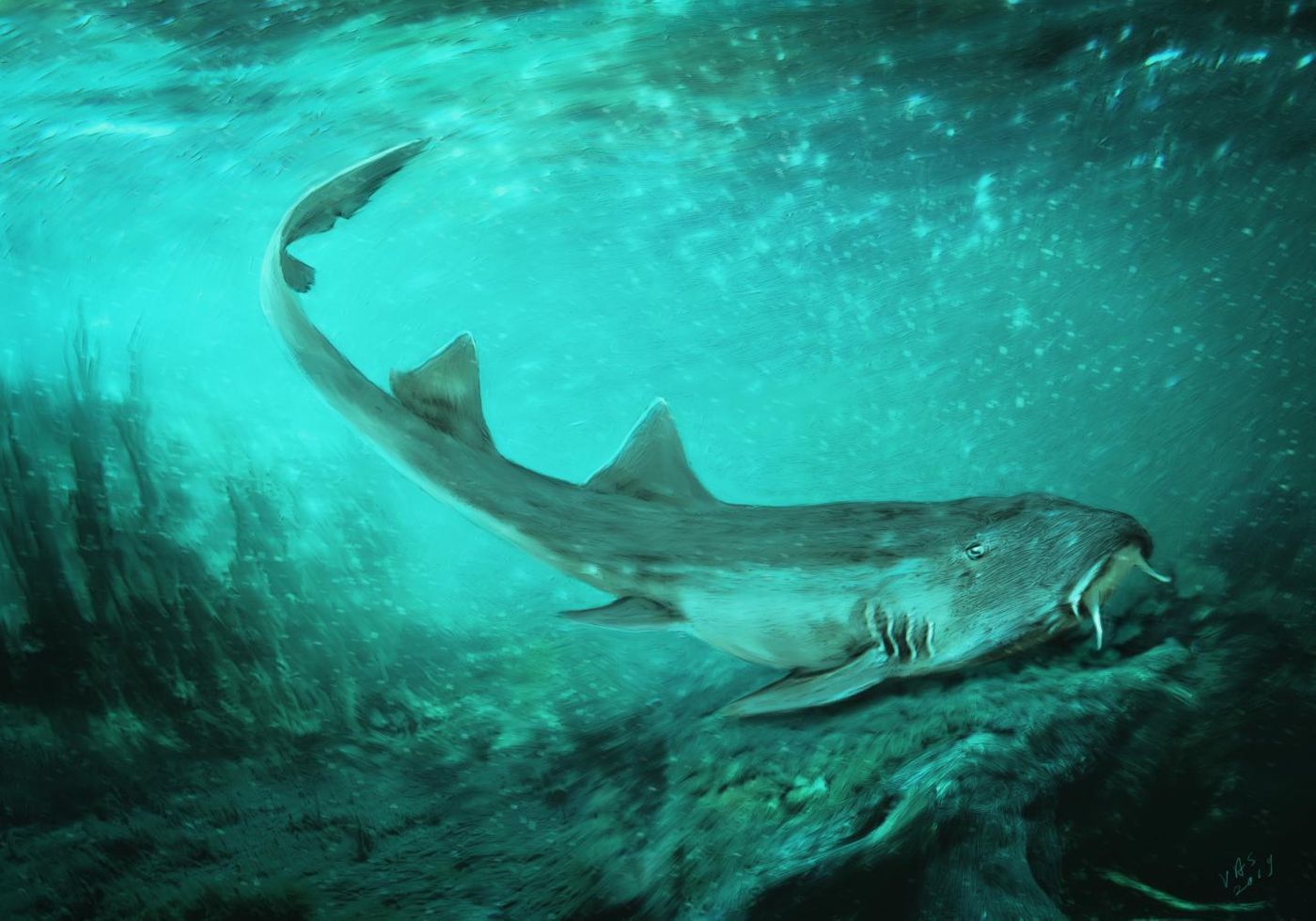Fossilized Shark Teeth Provide Clues About a Species That Lived Alongside T. Rex
Standing tall in the display room of the Field Museum of Natural History in Chicago, Illinois is Sue the T. Rex, an incredibly well-preserved specimen of everybody’s favorite dinosaur. But what you might not have known is that the museum also preserved and stored all the original sediment that was removed from Sue’s bones before her skeletal erection on the showroom floor.
As it now seems, that was probably a good idea. A team of scientists allegedly opted to sift through the old stockpiles of dirt and rock with a fine-toothed comb to discover smaller tidbits that may have been missed during the initial excavation, and astonishingly, they found something: the remains of an unidentified shark species that existed alongside Sue.
Image Credit: Velizar Simeonovski, Field Museum
The findings, which have been published this week in the Journal of Paleontology, describe a small shark with several tiny triangular teeth measuring no more than a millimeter across. Intriguingly, the teeth are shaped much like the spaceships found in the 1980s video game Galaga, which consequently resulted in the shark’s official name: Galagadon nordquistae.
Image Credit: Terry Gates
"Galagadon was less than two feet long--it's not exactly Jaws," said Peter Makovicky, the curator of dinosaurs at the museum and a co-author of the paper. "It's comparable to bamboo sharks living today. It probably had a flat face and was very likely camouflage-colored, since its relatives today have a camouflage pattern. It would have eaten small invertebrates and probably spent a fair amount of time lying on the bottom of the riverbed."
Related: Will this technology prevent future shark attacks?
The sediment in which Galagadon was discovered had reportedly been sitting in the museum’s storage room for decades. Given the circumstances in which the shark’s remains were found, it’s almost a miracle that it didn’t go unnoticed once again.
This was a particularly remarkable eureka moment for paleontologists because the findings would indicate that Galagadon existed at the same time as Sue the T. Rex. Understanding this small fact helps scientists fill the many gaps that reside in the biological timeline that represents life on Earth before people.
"Every species in an ecosystem plays a supporting role, keeping the whole network together," added Terry Gates, a lecturer from North Carolina State University and the lead author of the paper. "There is no way for us to understand what changed in the ecosystem during the time of the mass extinction at the end of the Cretaceous without knowing all the wonderful species that existed before."
Related: Great white shark dies in captivity in a Japanese aquarium
Breakthroughs just like this one are enough to make anyone wonder if paleontologists might have missed anything else while digging up massive fossils from the Earth. Perhaps eager scientists will follow suit and repeat similar procedures at other fossil sites around the globe; after all, it just might turn up an important discovery.
Source: EurekAlert, Journal of Paleontology










